supercars
X Marks The Spot For Genesis
Genesis has unveiled a new concept car. A stylish, low set coupe, the Genesis X is an EV and GT (Gran Turismo)for the future. Launched in a hi-tech media joint presentation with Jason B. Bergh with the location being a private rooftop in Los Angeles, and a showing of a film that brought together the Californian car culture to meet the vision of Genesis and its sustainable ideals, Genesis X highlights a different take on concept cars. A key visual identification of the concept is the Genesis Two Lines element. Seen in the company’s current vehicles, the Two Lines is extended on the concept, both on the exterior and interior, and the charging devices built in.
A key visual identification of the concept is the Genesis Two Lines element. Seen in the company’s current vehicles, the Two Lines is extended on the concept, both on the exterior and interior, and the charging devices built in.
Exterior design work sees the bonnet a one-piece “clamshell” unit, presenting a harmonious and uniform surface. The unbroken appearance allowed the designers to highlight the Two Lines idealism with both fenders having an unbroken sweep of lights strips from either side of the signature Genesis grille towards the door lines.
The grille’s structure has been reworked for a deeper three dimensional presence, and the interior sections have been painted the same Lençóis Blue as the concept’s exterior. The colour is said to evoke the hue seen in the lagoons of the Maranhenses National Park in Brazil, where a lake forms only during the rainy season. This sits above a classically styled air intake and thinner lines for the grille structure.
This brings to the Genesis X concept a sporting look yet functionality isn’t overlooked, with air to cool the electrics and batteries, channeling air through a aero-designed undertray for efficiency and increased drag reduction for better range. Jay Chang, the Global Head of the Genesis Brand, observed: “The car that we are unveiling today is a concept car that embodies the essential elements that Genesis pursues in its designs. Please take a moment to meet the future of Genesis design through this concept car, which embodies our brand’s progressive and audacious spirit.” SangYup Lee, the brand’s Global Design Chief, echoes that with: “The Genesis X Concept can be described as the ultimate vision of Athletic Elegance, the inherent design language of Genesis. The signature Two Lines theme and sustainable luxury will be blueprints for the futuristic designs and state-of-the-art technologies that Genesis seeks to adopt in its future models.”
Jay Chang, the Global Head of the Genesis Brand, observed: “The car that we are unveiling today is a concept car that embodies the essential elements that Genesis pursues in its designs. Please take a moment to meet the future of Genesis design through this concept car, which embodies our brand’s progressive and audacious spirit.” SangYup Lee, the brand’s Global Design Chief, echoes that with: “The Genesis X Concept can be described as the ultimate vision of Athletic Elegance, the inherent design language of Genesis. The signature Two Lines theme and sustainable luxury will be blueprints for the futuristic designs and state-of-the-art technologies that Genesis seeks to adopt in its future models.”
In profile it’s a classic GT motif, with long bonnet and truncated rear, joined by a gentle parabolic curve that in a quarter view highlights the tapering cabin and rear wheel flares. The rear has a dual parabola oval that houses the Two Lines taillights. There is no visible bootline seen in the concept though. The rear window has a pair of metallised strips that visually counterbalance the front and look to be, on the left side, the port for the charging of the battery. There’s more aero and tech with the wing mirrors eschewing the traditional glass mirrors. Here, Genesis goes slimline and embeds digital cameras. Aero and sportiness are combined in the bespoke, yet simple, five spoke wheels. These will cool the brake calipers whilst minimising drag at speed. For the interior Genesis highlight their “green” aspirations with “upcycled” leather trim. These are made from leftover materials, rather than sourcing them from new. In a weave pattern, the material is used on sections of the steering wheel, the safety belts, and the airbag cover. Also, to differentiate between driver and passenger for the four seater coupe, the trim designers took the unusual route of using two different colours. The passenger’s trim is Ocean Wave Green Blue, the driver’s a Scotch Brown.
For the interior Genesis highlight their “green” aspirations with “upcycled” leather trim. These are made from leftover materials, rather than sourcing them from new. In a weave pattern, the material is used on sections of the steering wheel, the safety belts, and the airbag cover. Also, to differentiate between driver and passenger for the four seater coupe, the trim designers took the unusual route of using two different colours. The passenger’s trim is Ocean Wave Green Blue, the driver’s a Scotch Brown. There’s further differentiation with the driver’s seat separated from the passenger via a solid looking floating console with a wrap around binnacle enveloping the driver’s section. This houses the Free-Form display, which manages various functions such as clusters, navigation and HVAC (heating, ventilation, and air conditioning) systems, and the Crystal Sphere Electronic Shift Lever, which integrates driving mode settings. Again, the designers have woven in the Two Lines ideal, with the binnacle drawing the lines to the air vents and side window mouldings.
There’s further differentiation with the driver’s seat separated from the passenger via a solid looking floating console with a wrap around binnacle enveloping the driver’s section. This houses the Free-Form display, which manages various functions such as clusters, navigation and HVAC (heating, ventilation, and air conditioning) systems, and the Crystal Sphere Electronic Shift Lever, which integrates driving mode settings. Again, the designers have woven in the Two Lines ideal, with the binnacle drawing the lines to the air vents and side window mouldings. To debut the Genesis X Concept to consumers around the globe, the brand opened its digital motor show website (digitalmotorshow.genesis.com) with the unveiling of the concept car, offering visitors various interactive experiences and 360-degree views of its interior and exterior.
To debut the Genesis X Concept to consumers around the globe, the brand opened its digital motor show website (digitalmotorshow.genesis.com) with the unveiling of the concept car, offering visitors various interactive experiences and 360-degree views of its interior and exterior.
At the time of writing, Genesis had not released details of the EV drive.
EV Supercars

Porsche Taycan Turbo S
Porsche has already built their fully electric supercar and it’s called the Taycan. Currently, the quickest Taycan is the Taycan Turbo S, which boasts 560 kW of power, 1,050 N⋅m of torque, a 0-100 km/h sprint time of just 2.8 seconds and a top speed of 260 km/h. We knew it would be fast, but it will also manage around 400 km of travel before a recharge is needed. Of course, that range will be affected by factors like the weather, number of hills in your commute, how heavy your right foot is, how many on-board features you’re running and how much extra weight is on board – all much the same traits that affect combustion consumption…
Tesla is the biggest name in electric vehicles, and their new Roadster sets the supercar performance benchmark. Revealed back in 2017, the second-generation Tesla Roadster will be capable of skipping through the 0-100 km/h in around 2 seconds, the 0-160 km/h dash in 4.2 seconds, the quarter mile in 8.8 seconds and boast a top speed of around 400 km/h. These records are aided by a phenomenal 10,000 Nm combined torque output for the AWD system and a drivable range before recharging of even over 900 km. The new Tesla Roadster sales will likely begin 2022.
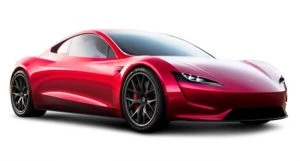
Tesla Roadster
Porsche and Tesla are, perhaps, the more well-known leaders in EV supercar technology.
Ferrari has yet to build a fully electric car. Ferrari is concentrating on their hybrid supercars; the new Ferrari SF90 Stradale being the latest model that incorporates electric motors with the combustion engine layout. Ferrari claims the SF90 Stradale can clean out the 0-100 km/h sprint in well under 3 seconds, the 0-200 km/h dash in less than 7 seconds, while reaching a top speed in excess of 330 km/h. The SF90 Stradale can also travel 12-to-24 km on battery power alone. John Elkann, from Ferrari, says the company will offer its first electric supercar at some stage this decade, but the hybrid models would still form part of its line-up even in 2030. However, that said, Ferrari is looking to sell the Ferrari Purosangue as their first SUV with hybrid engines, along with a fully-electric powertrain for the two following Purosangue models. From the word go, the Purosangue will be designed with the chassis structured to take full electric power. The first hybrid Purosangue should be on sale between 2024 and 2026.
You can’t talk about Ferrari’s electric future without considering Lamborghini’s. Lamborghini has yet to develop an all-electric supercar. Come 2021/2022, Lamborghini is offering a production hybrid supercar called the Lamborghini Sian FKP 37. That sounds like a similar direction to Ferrari; however, Lamborghini did unveil the Terzo Millennio concept car back in 2017.
So, who else is offering fully electric supercars? The following EV supercars have been built up by various entrepreneurs and joint ventures and are, therefore, very rare. Here are some of them to whet your appetite:
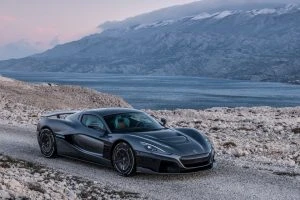
Rimac C_Two
The Rimac C_Two has a 412 km/h top speed backed up with approximately 500 km of electric range.
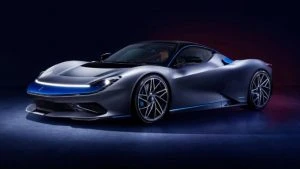
Pininfarina Battista

Lotus Evija
The Lotus Evija has a claimed 1,680 kg weight – pretty light for an EV supercar.
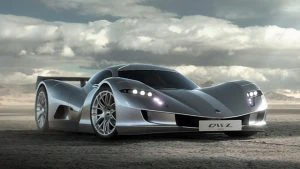
Aspark Owl
Aspark Owl with its 0-100 km/h sprint done and dusted in less than 2 seconds. Top speed over 400 km/h.
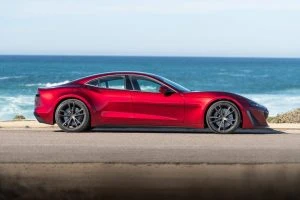
Drako-GTE
The Drako GTE is the brainchild of two Californian-based engineers and entrepreneurs. The car should deliver around 8,880 Nm of torque and a 400 km/h-plus top speed.
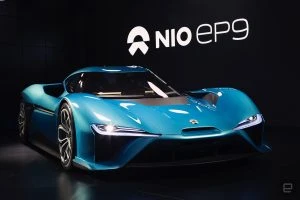
Nio-ep9
The Nio EP9 has actually delivered a 6 m 45.9 sec Nürburgring lap in the hands of Scottish driver Peter Dumbreck. The EV supercar boasts around 6334 Nm of torque and a down-force claimed to be twice that of an F1 car.
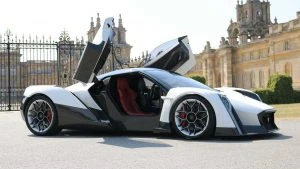
Dendrobium D-1
The Dendrobium has money and inspiration provided to it from Singapore; however it is being engineered and developed in the UK by Williams Advanced Engineering, and with people who were involved in the McLaren F1 design.
Aussie’s Rosco aiming for 1000 mph
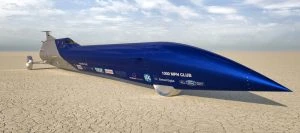
Aussie Invader 5R
It might be a bit hard to call it a conventional car but then it’s not really a conventional car in the sense that the Aussie Invader 5R rocket-car looks more plane/rocket in its appearance. The Aussie Invader 5R rocket-car boasts an insanely long arrow-shaped design with three wheels, large aerodynamic wind deflectors and an engine with close to 150,000 kW! Yes, that’s correct; you did read that figure correctly. To put that in perspective, an Aussie V8 Supercar puts out, on average, around 475 kW of power. Now, if you’ve ever experienced the wonderful roar of these V8s when they blast by around the circuit, then you can understand the aura of such kW potency. But this Aussie Invader 5R rocket-car makes as much power as 316 of these Aussie V8 Supercars put together! The Aussie Invader 5R rocket-car is powered by a single bi-propellant rocket reportedly capable of producing upwards of 62,000 lbf of thrust. That’s over four times more than a Boeing 737 jet!
Founder and designer of the new Aussie Invader 5R rocket-car, Rosco McGlashan, has the world’s fastest land speed record in his sights. He will reportedly be the pilot of the 16-metre long, nine-tonne steel-framed vehicle. And the target? The target top speed of 1609 km/h (1000 mph) would be the fastest of any land-going vehicle, ever. And 1000 mph would see it blitz the current land speed record held by the Noble Thrust SSC on a Nevada salt flat in 1997, which averaged 1223.7 km/h and broke the sound barrier while doing so.
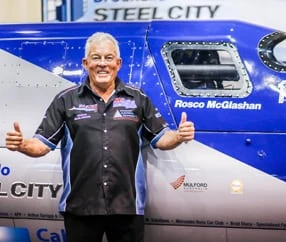
Rosco McGlashan
Rosco McGlashan would like to set the new record next year once all the Covid palaver is over-and-done-with, and it will likely be set somewhere in the Queensland or Western Australian desert. Rosco is no stranger to setting speed records; he is already the holder of the Australian land speed record, where in 1994 he clocked 802.6 km/h behind the wheel of a jet-powered predecessor to the Aussie Invader 5R out on the dry salt flats of Lake Gairdner, near Adelaide. He has, after all, built all of his drag racing, exhibition, and land-speed racing vehicles himself over the years in a shed at his home.
Rosco has accurate computer modelling on the Aussie Invader 5R rocket-car, which suggests that the Aussie Invader 5R rocket-car will have enough power and thrust for launching the car from 0-100 km/h in approximately 1.1 seconds. It should reach its target of 1000 mph in less than 30 seconds. Slowing the Aussie Invader 5R rocket-car down is no mean feat and will thus will require a full 13 km of flat desert just to stop it. A multi-stage deployment of high-speed hydraulic air brakes, mid-speed parachutes, and low-speed disc brakes have been designed to activate progressively to safely bring the vehicle to a halt.
Picking an exact location will depend largely on which organization or individual steps up as the primary sponsor for the effort. As will the practical necessity of having 5 km of flat desert for getting up to speed plus another 13 km to stop it.
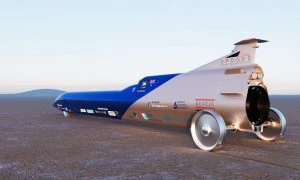
Aussie Invader 5R
Era’s End: 2020 B1000 Says Goodbye To The Lion
Motorsport at Bathurst will see the end of an era for the “long” weekend of October 15 to 18. Covering four days, with practice, qualifying, and racing for the main game of Supercars and the supporting categories, it’s a tradition that sees an end to an era in 2020.
Starting in the 1960s as the Armstrong 500, and undergoing several sponsorship name changes, such as the Hardie-Ferodo, Tooheys, and more recently Supercheap, Australia’s “Great Race” says goodbye to Holden as a brand and competitor this weekend.
With the closure of the manufacturing side of the brand in 2018 and the subsequent decision by General Motors to retire the century-plus old name of Holden, a name that has been a constant at the mountain for over two decades, and a history that goes back another three, to think that the name will finally disappear from showrooms and timing sheets for ever is almost impossible to consider.
Holden itself began as a saddlery in 1856 by James A. Holden. He had emigrated to Australia from England in 1852. 1905 and James’ son, Edward, who had been dabbling in the still new field of automobiles, joined the company. This lead to the firm becoming involved in providing minor repairs to the upholstery in vehicles of the day. After some years of build bodies to be mounted on chassis, Holden’s Motor Body Builders was founded in 1917. General Motors bought the firm in 1931 after The Great Depression took its toll and General Motors-Holden was born.
Holden gave us the 48-215 and FJ, the EH 179 Special, the brutal 350ci Monaro and nimble XU-1, the downright sexy LX A9X Torana hatchback, and of course, the Bullpitt favourite. The Kingswood. There was the 186ci, the 253ci, and our own homegrown power hero, the 308ci.  Then came 1978 and the birth of a nameplate that would underpin Holden until 2018. First up was an Aussie icon designation, the VB. 1984 and the world car VK, followed by the Nissan powered VL, the restyled VR and the billion dollar baby VE before the final V series car, the VF. The ZB Commodore would be the nail in the coffin as far as many were concerned as it was front, not rear, wheel drive. Gone was the V8 and a “proper” four door as the ZB was a fastback design.
Then came 1978 and the birth of a nameplate that would underpin Holden until 2018. First up was an Aussie icon designation, the VB. 1984 and the world car VK, followed by the Nissan powered VL, the restyled VR and the billion dollar baby VE before the final V series car, the VF. The ZB Commodore would be the nail in the coffin as far as many were concerned as it was front, not rear, wheel drive. Gone was the V8 and a “proper” four door as the ZB was a fastback design.
The Red Lion brought to public prominence Brock. Peter Geoffrey Brock, if you don’t mind. There is Bruce McPhee and Barry Mulholland, Colin Bond and Tony Roberts, Larry Perkins, John Harvey, Russell Ingall, Craig Lowndes, Mark Skaife, Steven Richards that all have red lion blood in the veins.
It’s not all beer and skittles though. Viva, Epica, Malibu are names that will remain associated with the brand and did little to help the public perception of a brand that had lost its way. Stories of indifferent dealership service practices and a slowness to move with the market also blurred the once untarnished badge’s line between want and want not.
Holden had a proud history in Australia, in both the automotive retail sector and in motorsport. In that sense it officially reaches the end of the line late in the afternoon of Sunday October 18 2020.
Vale, Holden.
